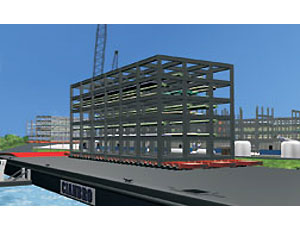Leaders of the Construction Users Roundtable say they want to push designers and contractors to use more sophisticated methods of prefabrication and modular construction techniques to cut the time and cost of construction and to complete projects more safely with fewer workers.

The comments were made at CURT's spring meeting April 12-13 in Covington, Ky., outside Cincinnati.
While the use of prefabrication techniques has accelerated in the last five years—companies such as Jacobs Engineering, The Shaw Group Inc. and Cianbro are making advances— most of the rest of the industry doesn't plan prefabrication imaginatively enough.
"Right now, we're taking stickbuilidng from the field and putting it in a shop," says Robert Volkman, a CURT project coordinator and former associate director for global construction management with Procter and Gamble.
Volkman says prefabrication and modular construction techniques are important in order to complete projects with fewer workers. "It's essential to overcome our workforce shortage," he says. The shortage will become acute again as the slow climb out of recession continues, he says. "We now have to do it with less labor."
Prefabrication and shop fabrication also allow work to be completed more safely, says Michael G. Conley, construction and project controls competency leader for Dupont Engineering and the current president of CURT.
Over the decades, modular and shop-assembled construction has been used to build homes, schools, prisons and large process plants.
Dupont has used prefabrication for pipe bridges and currently has a push on to apply prefabrication to larger segmented steel sub-assemblies, says Conley.
The distances over which prefabricated assemblies and modules can be economically shipped to jobsites has also increased, say Volkman and Conley.




Post a comment to this article
Report Abusive Comment